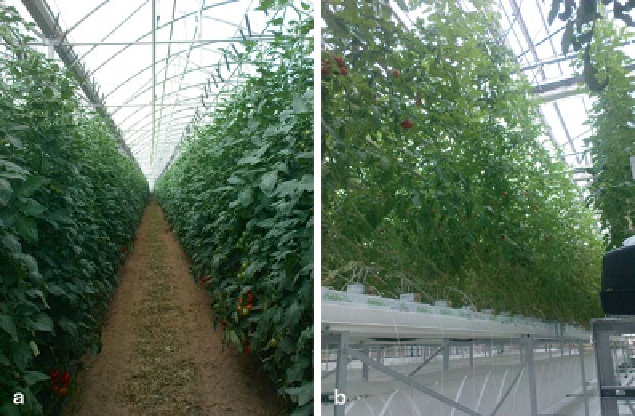Agriculture Reference
In-Depth Information
Fig. 10.18
Single stem tomatoes in (
a
) non-lowering system and (
b
) lowering system. (Source:
Gruda 2010, 2011, private collection)
Plant Density
Plant density depends on plant species, the cultivar or the genotype used, and the as-
sociated environmental and agronomic conditions. An increase in plant density is to
some extent positively correlated with yield, however negatively correlated with the
size of the marketable plant part. The reason for that is thought to be the insufficient
supply of photo-assimilates caused mainly due to a competition for light intercep-
tion, influencing the photosynthetic rate and carbohydrate distribution.
Plant Training
Training is applied to indeterminate vegetable crops such as the tomato, pepper, and
cucumber where the main objective (through a combination of plant density and
pruning) is to improve light interception of leaves. In addition, the positive effects
on air movement can also influence disease spread and control. For instance, tomato
plants are supported by plastic twines and are hitched around a wire (Papadopoulos
1991
; Schwarz
1995
) (Fig.
10.18a
). However, in modern soilless greenhouses with
supporting wires of 2 m or higher, as tomato plants reach the wire, they are untied
which allows the plants to be lowered and grown horizontally to the slabs or sys-
tem ground. The green slip is hanging vertically from the wire and has very good
assimilation conditions (Fig.
10.18b
). With this training system the plant length of
tomatoes can reach more than 12 m and if environmental conditions are adequate
to plant growth, spring cropping can be extended to a single full cultivation period

